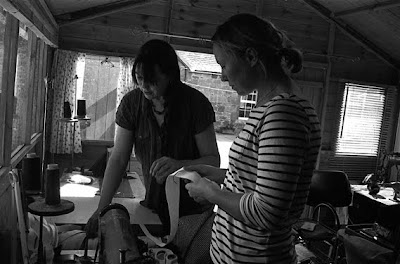Reference taken from the book: 'Wonderful Wiener Werkstatte - Design in Vienna 1903-1932' by Christian Brandstatter. Blurb taken from the introduction below...
'At the turn of the 20th Century, Vienna was the European epicentre of innovation of the arts. in 1903 the Vienna Workshops were created - an idealistic offspring of Art Nouveau that, in resistance to increasing mass production and industrialisation, called for integregation of the fine and applied arts, the union of form and function in design, and treatment of everyday objects with refined craftmanship and aesthetic care. The movement embraced all areas of arts and design.'
This approach and point of view is completely in-keeping with the Marwood ethos and fits in perfectly with our decision making process when designing and producing Marwood Ties.













